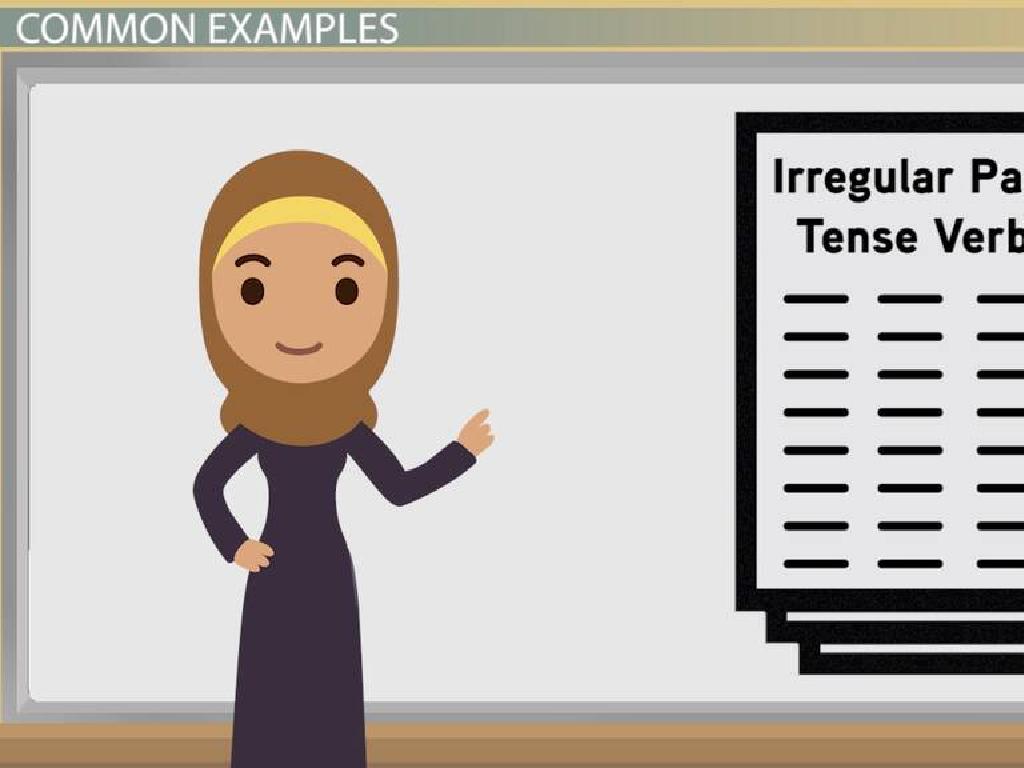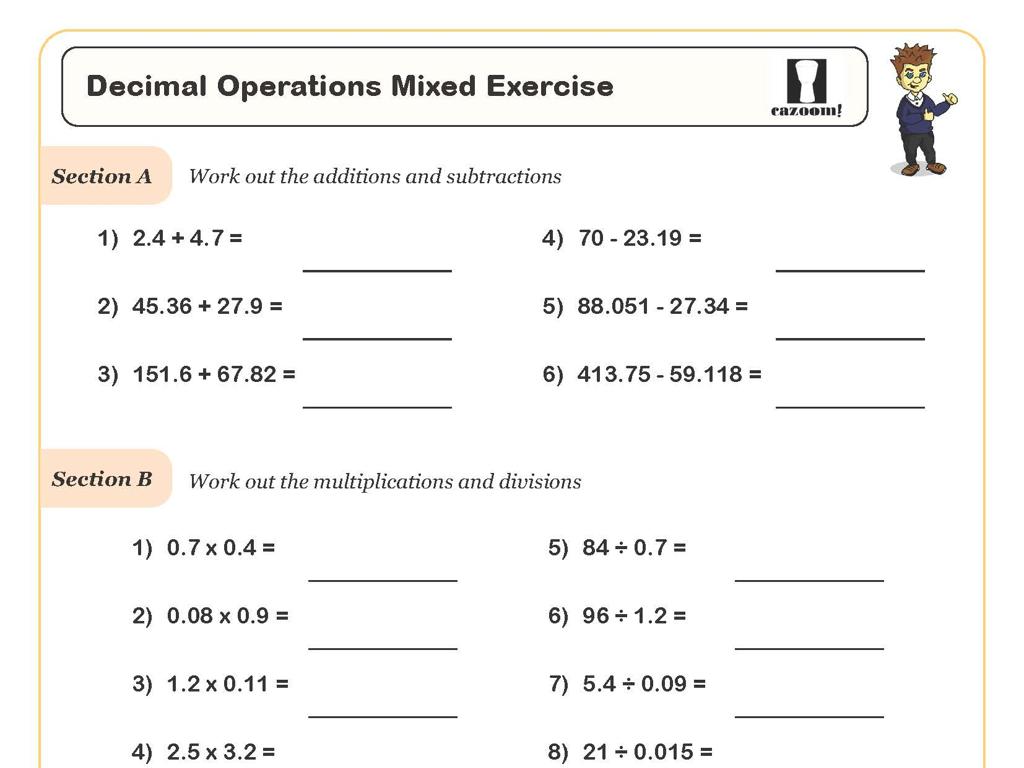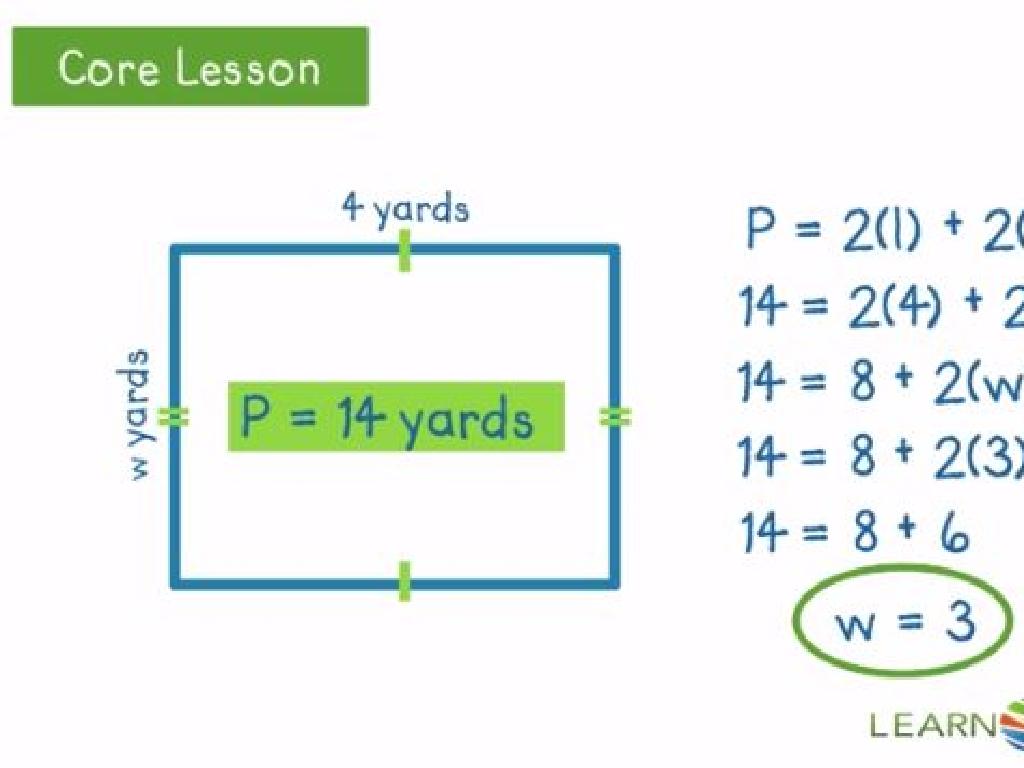Identify Phases Of The Moon
Subject: Science
Grade: Fifth grade
Topic: Astronomy
Please LOG IN to download the presentation. Access is available to registered users only.
View More Content
Welcome to Astronomy: Phases of the Moon
– Meet our Moon: Earth’s companion
– The Moon’s role in our sky
– The Moon lights up our night and affects tides
– Phases of the Moon: a preview
– New, Quarter, Gibbous, Full: the Moon’s changing face
– Learning to identify each phase
– We’ll learn the names and how to recognize them
|
This slide introduces the Moon and its importance to Earth, setting the stage for a deeper dive into the lunar phases. Start by discussing the Moon’s presence as Earth’s only natural satellite and its visibility in the night sky. Highlight how the Moon influences natural phenomena such as tides. Then, give a brief overview of the different phases of the Moon, explaining that these are the various appearances the Moon takes on from Earth’s perspective throughout the month. Encourage students to be curious about how the Moon changes shape in the sky and prepare them to learn the names and characteristics of each phase in today’s lesson.
Exploring Our Moon
– The Moon: Earth’s satellite
– Moon’s orbit and sunlight
– The Moon travels around Earth, lit by the Sun’s rays
– Moon’s size compared to Earth
– The Moon is much smaller, about 1/4 Earth’s diameter
– Fun Fact about the Moon
– Did you know? The Moon is drifting away from Earth by 3.8cm a year!
|
Begin the lesson by introducing the Moon as Earth’s only natural satellite, highlighting its role in the night sky. Explain how the Moon orbits the Earth and the role of the Sun in illuminating it, causing the phases we see. Discuss the relative size of the Moon compared to Earth to give students a sense of scale. Share a fun fact to spark interest, such as the Moon’s gradual drift away from Earth. This will set the stage for understanding the Moon’s phases and its importance in astronomy. Encourage students to observe the Moon at night and note its appearance.
Why Does the Moon Have Phases?
– Moon orbits Earth: phases change
– The changing positions create the lunar phases we see
– Moon reflects Sun’s light
– The Moon shines because it reflects sunlight
– Moon’s position changes visible light
– Our view of the moon’s lighted side changes over a month
– Phases: New, Crescent, Quarter, Gibbous, Full
– Learn the names and order of the moon phases
|
This slide explains the concept of the lunar phases to the students. The Moon’s phases are a result of its orbit around Earth, which changes the angle at which we see the illuminated part of the Moon. Since the Moon doesn’t produce its own light and only reflects the Sun’s light, different portions of the Moon appear lit as it moves around Earth. It’s important to help students visualize this movement with diagrams or models if possible. Encourage them to observe the Moon over a month and sketch the changes they notice. Understanding the sequence of the phases (New, Crescent, Quarter, Gibbous, Full) is crucial and can be made interactive by having students act out the positions of the Sun, Earth, and Moon.
Phases of the Moon
– New Moon to Waxing Crescent
– New Moon is invisible, Waxing Crescent is a sliver of light
– First Quarter to Waxing Gibbous
– First Quarter is half lit, Waxing Gibbous is mostly lit
– Full Moon to Waning Gibbous
– Full Moon is fully lit, Waning Gibbous starts to shrink
– Last Quarter to Waning Crescent
– Last Quarter is half again, Waning Crescent is a fading sliver
|
This slide introduces students to the eight distinct phases of the Moon, which are part of a larger cycle that repeats approximately every 29.5 days. Each phase is characterized by the amount of the Moon that is illuminated by the Sun as seen from Earth. Starting with the New Moon, where the Moon is not visible, to the Waxing Crescent, where a small part becomes visible. The First Quarter shows half of the Moon’s surface, progressing to the Waxing Gibbous where more than half is visible. The Full Moon is completely illuminated, followed by the Waning Gibbous where the illumination starts to decrease. The Last Quarter shows half of the Moon’s surface again, and finally, the Waning Crescent where the visible part of the Moon reduces to a small sliver before the cycle restarts. Encourage students to observe the Moon over a month and sketch the changes they see. This will help them understand the cyclical nature of the Moon’s phases.
Observing the Moon Phases
– Observing Moon phases from Earth
– The Moon changes shape in the sky throughout the month.
– Tracking with a Moon calendar
– Use a calendar to note each phase for a month.
– Activity: Moon diary creation
– Keep a diary, draw the Moon’s shape each night.
|
This slide introduces students to the concept of observing the Moon’s phases from Earth. Explain that the Moon doesn’t change its shape; the changes we see are due to its position relative to Earth and the Sun. Introduce a Moon calendar as a tool to track these changes over the course of a month. For the activity, instruct students to create their own Moon diary, drawing the visible shape of the Moon each night. This will help them understand the cyclical pattern of the Moon’s phases. Provide examples of Moon diaries and encourage creativity. The activity will engage students in regular observation, reinforcing their understanding of the Moon’s phases.
The New Moon Phase
– New Moon position explained
– The Moon is between Earth and the Sun during this phase.
– Why New Moon is invisible
– Its sunlit side is away from Earth, so we can’t see it.
– Significance in lunar cycle
– Marks the beginning of the Moon’s 29.5-day cycle.
|
The New Moon phase is a key concept in understanding the lunar cycle. It occurs when the Moon is positioned between the Earth and the Sun, making the side that is illuminated by the Sun not visible from Earth. This is why we cannot see the Moon during this phase. It’s important to note that the New Moon marks the start of the Moon’s cycle, which lasts approximately 29.5 days. This phase is crucial for understanding the progression of the Moon’s appearance in the sky. Encourage students to think about how the Moon’s position relative to Earth and the Sun affects what we see from our vantage point on Earth.
The Full Moon Phase
– Full Moon opposite Earth from Sun
– The Full Moon occurs when it’s directly opposite the Sun, showing us a bright, round disk.
– Moon’s surface fully illuminated
– This phase is when the entire face of the Moon we can see shines brightly in the night sky.
– Midpoint of the Moon’s cycle
– It marks the halfway point of the lunar cycle, occurring approximately every 29.5 days.
|
The Full Moon is a fascinating phase for students to learn about as it’s easily observable and marks a significant point in the lunar cycle. It occurs when the Moon is on the opposite side of Earth from the Sun, which results in the Moon’s surface being fully illuminated as we see it from Earth. This is the midpoint of the Moon’s phases, happening about once a month. During this time, the Moon appears as a complete circle in the sky. It’s a great opportunity for students to observe the Moon at night and discuss how its appearance changes over time. Encourage students to keep a moon diary, noting its shape each night to understand the cycle better.
Class Activity: Phases of the Moon with Oreos
– Create Moon phases with Oreos
– Separate cream to match Moon phases
– Use the cream to represent the illuminated part of the Moon.
– Share your Oreo Moon creations
– Present your cookie phases to classmates.
– Discuss the phases as a class
– Talk about how each phase represents the Moon at different times.
|
This fun and interactive class activity will help students learn about the Moon’s phases in a tangible way. Provide each student with a few Oreo cookies. Instruct them to carefully twist the cookies apart and use a plastic knife to scrape off the cream filling to mimic the different phases of the Moon, from new Moon to full Moon. Encourage creativity and ensure they understand that the white cream represents the part of the Moon that we can see from Earth. After creating the eight main phases, students will present their Oreo Moon phases to the class, explaining each phase. This activity not only makes learning about the Moon’s phases enjoyable but also reinforces the concept through a hands-on experience. Possible variations include using different cookie types or modeling clay if dietary restrictions are a concern.
Moon Phases: Conclusion and Review
– Recap of the 8 Moon phases
– Significance of each phase
– New Moon to Full Moon: how it affects tides and animal behavior
– Q&A session
– Observe & record the Moon tonight
– Start a Moon diary, note its shape, and compare with the phases learned
|
As we conclude, review the eight distinct phases of the Moon, emphasizing their cyclical nature. Discuss the significance of each phase, particularly how they influence ocean tides and nocturnal animal behavior. Open the floor for a Q&A session to clarify any doubts and encourage curiosity. Finally, remind students to observe the Moon tonight and to begin a Moon diary as a practical application of what they’ve learned. This activity will help reinforce their understanding of the lunar cycle and its phases. Encourage them to share their observations in the next class.





